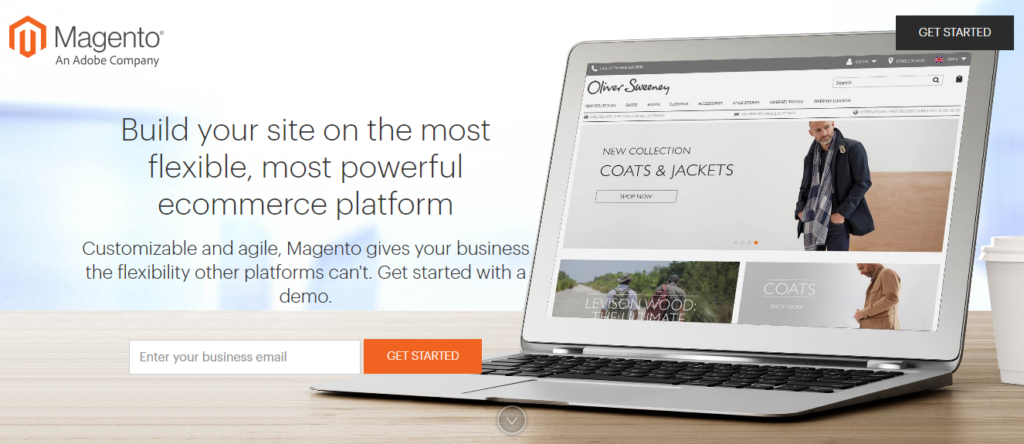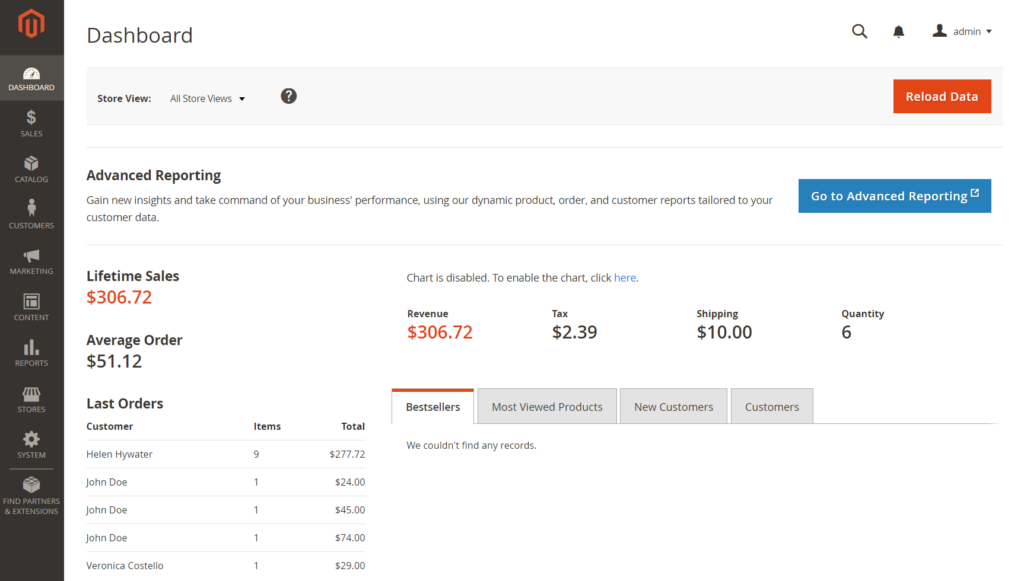Brands looking to build larger eCommerce sites and want to have access to additional features such as SEO functionality.
Before we walk you through Magento accessibility, it is important to know the answer to this question: what is ADA compliance for websites?
According to Title 3 of the ADA, businesses are required to make modifications in order to accommodate people with disabilities. Despite the fact that websites weren’t originally named in the ADA, recently, courts have ruled that they should be included.
If you use Magneto, your website also needs to conform to ADA and WCAG guidelines.
Building and maintaining an accessible website protects your business and helps you provide necessary accommodations for potential customers. So, if you’re a Magento e-store owner, keep reading!
Today, we’ll talk about everything you need to know about Magento websites and ADA compliance.
The Web Content Accessibility Guidelines (WCAG), which all accessibility standards are based on, applies to both web pages and web applications, including native and hybrid apps. These guidelines provide detailed instructions on how website and app owners can make their platforms accessible to users with varying disabilities, ensuring they are not discriminated against in day-to-day life.

WCAG forms part of the Web Accessibility Initiative (WAI) (2) of the World Wide Web Consortium (W3C) (3). This initiative was created to ensure that disabled users don’t encounter any barriers when browsing websites and engaging with mobile apps, which are now an essential part of our lives.
According to Title 3 of the ADA, businesses are required to make modifications in order to accommodate people with disabilities. Despite the fact that websites weren’t originally named in the ADA, recently, courts have ruled that they should be included.
Incorporating ADA-compliant technologies into your Magento eCommerce store not only helps you attract a wider audience, but it also makes it easy for those with disabilities to access your site.
Magento, which is now an Adobe company, encourages its users to make their e-commerce stores ADA compliant. As such, the platform provides well-devised guidelines.

Magento accessibility guidelines recommend providing appropriate contrast and limiting the use of all CAPS text. The platform also suggests using the appropriate font size and correct reading order.
Links should be easily identifiable from other text and website owners are discouraged from using content that causes seizures.
There are also guidelines on providing a “skip to main content” link for keyboard navigators.
Other Magento accessibility guidelines speak to providing accessible content and better user interaction. This includes using descriptive labels, adopting content predictability, and ensuring videos and audio have play and pause buttons.
For example, links should make sense on their own. This means using anchor text that isn’t confusing.
While these guidelines are for web developers, they can also help you achieve Magento accessibility more easily.
Development guidelines state that your website should be accessible to people who use their keyboards to navigate. It should also use true text for a faster loading time and easier translation. There are platforms like accessiBe and Userway that can help with this.
Brands looking to build larger eCommerce sites and want to have access to additional features such as SEO functionality.
Brands that don’t have larger budgets, the resources to regularly maintain their websites, or have specific design requirements.
If your Magento e-commerce store is not accessible to people with special needs, you’re at risk of ADA lawsuits. While making your website accessible might seem costly, lawsuits are more expensive.
Also, not having an accessible Magento site means you miss out on customers looking for your products or services purely because they can’t access your site.

Here are some of the other benefits of making your Magento e-store ADA Compliant:
Popular search engines like Google give a higher ranking to ADA-compliant websites. Using Magento, you can make your website ADA compliant by adding alternate text and transcripts to videos, audio, and images. The idea is to enhance the user experience, which Google values.
There are also other SEO options worth considering, like using keyword-relevant titles and optimized audio transcription. This way, your eCommerce site is accessible to more people, and you rank higher on search engines.
We recently conducted a study in conjunction with SEMRush and BuiltWith that you can access here (3) to learn more about how SEO and accessibility work together.
Meeting ADA compliance requirements makes your e-commerce site more appealing to customers. Magento accessibility also helps increase the reputation of your brand.
Given the competition in the eCommerce world, giving customers maximum accessibility makes your e-commerce brand stand out.
If you don’t meet Magento accessibility and ADA compliance standards, plenty of lawsuits could be waiting for you in the near future. 82% of the top 500 eCommerce companies (5) have faced legal action in recent years, but this doesn’t mean smaller websites are immune either.
If you want to avoid getting sued, you need to make accessibility changes to your website. This way, you can find the areas that need fixing and avoid lawsuits.
It is estimated that around 1 billion people, or 15% of the world’s population, (6) live with disabilities.
So, as you can imagine, making your website accessibility means you can enjoy more traffic. And when customers find out that your website is ADA compliant, they’ll spread the word, and bring you even more traffic.
Simply put, you lose all that additional traffic and activity if your website isn’t accessible.
By achieving Magento accessibility, many disabled users can now access your e-commerce store. As such, you not only get a traffic boost; you can also improve your sales by up to 20%!
Customers with disabilities are very loyal to organizations that improve their quality of life, so ADA compliance is an opportunity for your business to win a loyal customer base.
A Fast and Efficient Way to Comply with Web Accessibility Guidelines
Our top-recommended web accessibility solution is accessiBe. This advanced AI-powered tool makes it easier to apply the latest WCAG standards to your site by simply adding a line of code to the back-end.

Improving your e-commerce website’s accessibility is a process that can be achieved in various ways.
The most famous guidelines for achieving website accessibility are the WCAG. WCAG requires websites to be:
✅ Perceivable: A website’s visitors need to be able to access all elements, regardless of their disability.
✅ Operable: Every element of a website’s user interface and navigation needs to be operable.
✅ Understandable: Website components need to be easily understood by all visitors.
✅ Robust: The website needs to be accessible with a variety of assistive technologies.
Now, in case you’re wondering, here are some of the common ways to make your e-commerce site ADA compliant:
 accessiBe: Our Top Recommendation
accessiBe: Our Top RecommendationaccessiBe is one of the most talked-about web accessibility tools available today. It helps take a lot of the manual work out of adhering to ADA and WCAG standards by making it quicker and easier to identify web accessibility issues on your site.




UserWay is trusted by thousands of leading brands that want to create a more inclusive experience for their online users. With the help of an easy-to-use accessibility overlay, it’s never been easier to ensure your Magento site is compliant with some of the top ADA requirements.




ADA compliance should be a crucial function in every business, including those with e-commerce stores. While the process can get expensive, legal issues are worse and, of course, more costly.
If your Magento e-commerce site isn’t accessible, you’re putting your business at risk of ADA-compliant lawsuits. You also risk losing a loyal customer base and all the benefits we’ve discussed above.
If you’re looking for a tool to check if your Magento e-commerce website is accessible, Accessibility Checker is the perfect option.
Found this article insightful? Check our other useful guides here: